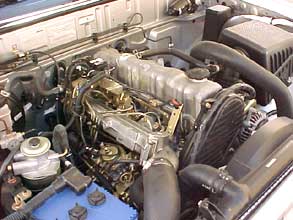BY STEVEN BUTCHER | 31st Jan 2002

It achieves this high torque from the introduction of Mazda's new Diagonal Flow Turbocharger, which Mazda say gives the Bravo 15 per cent more power and 24 per cent more torque than anything in its class - and on driving it you would have to agree that for a 2.5-litre engine pushing a vehicle that weighs in at 1680kg, it copes extremely well.
The engine breathes via a set of 12 valves, driven from a single overhead camshaft using two for intake and one for exhaust. The timing belt used to drive the camshaft has a scheduled replacement every 100,000km, (the petrol engine uses a self adjusting timing chain, and no scheduled change is required).
The engine revs to a safe 5000rpm but gearshifts are generally made between 3000rpm and 3500rpm. The turbine shaft and casing is liquid cooled by oil and water and this should ensure a long service life. The engine is smoothed by dual balance shafts and is very quiet on start-up and idle. Diesels are known for their economy and this 2.5-litre engine is right up with the fuel misers.
No official fuel economy figures are available for the diesel engine but our test vehicle returned 11.0L/100km on a city cycle and 9.0L/100km on the highway. The fuel tank capacity is 70 litres with the average fill-up from empty on the gauge being 60 litres. Mazda recommends engine and vehicle service intervals of 10,000km.